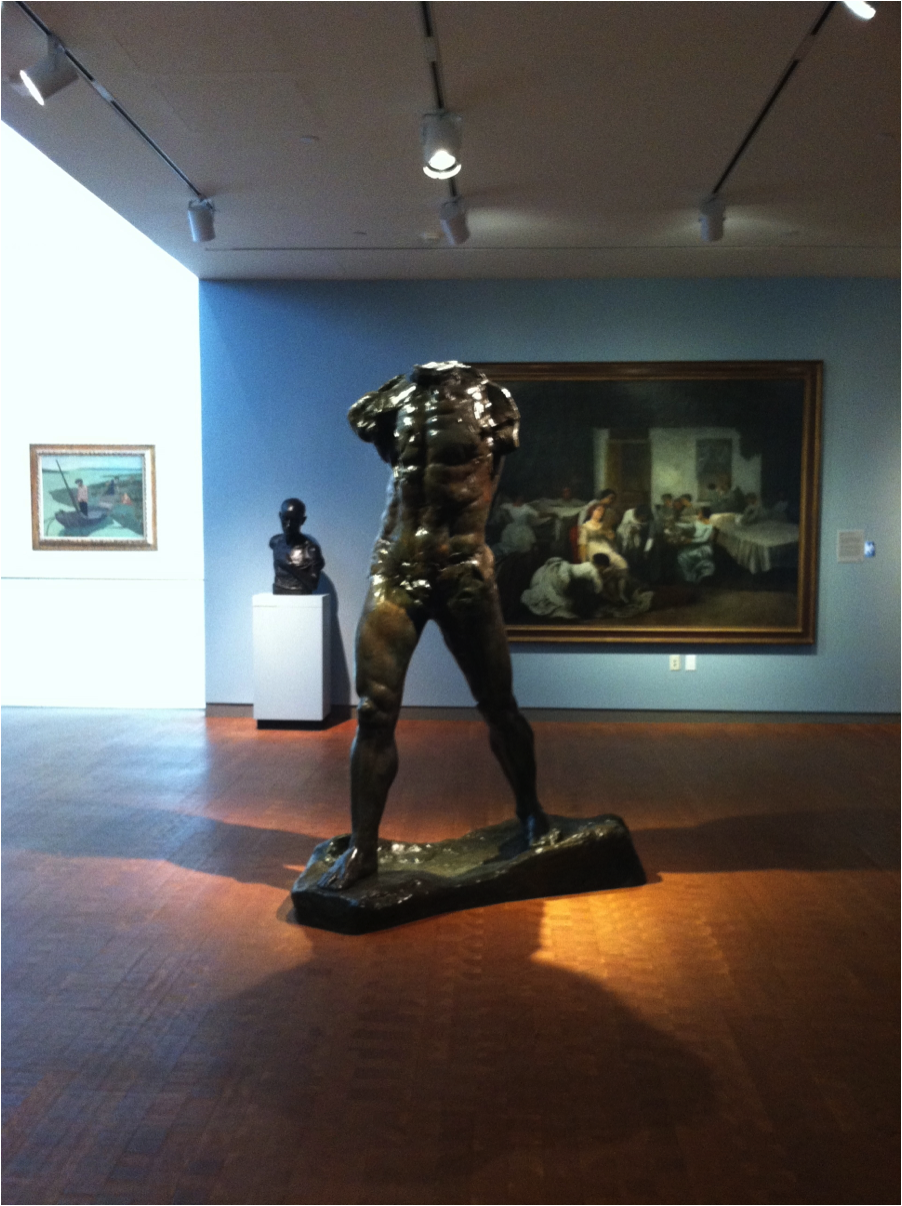The Art of Our Sister Colleges: An Overview

When your aesthetic appetite has exhausted the 18,000 works available in Amherst’s own Mead Art Museum or when you’re just looking to get off campus for an afternoon, hop in a car and head to Smith or Mount Holyoke, or both.
The Smith College Museum of Art, as part of the Brown Fine Arts Center, is reminiscent of our own Beneski building – brick red, with lots of glass, metal, and lateral slatting. After earning free admission at the door via your five-college ID, you’ll pass (or not) through a beautiful gift shop, with a huge selection of local jewelry and not-so-local silk scarves. Past multiple glass doors and lobby attendants, you’ll enter the first-floor gallery. Its current exhibition is “Drawn to Excellence: Renaissance to Romantic Drawings,” a Smith alum’s privately donated collection, showing through Jan. 6, 2013. The exhibition features delicate graphite, chalk and ink renderings from some of the most accomplished artists of the Renaissance to Romantic periods — Bronzino, Carraci, Delacroix, Fragonard, Tiepolo and Vasari included — and anyone who has ever wielded a pencil, let alone heard of those names, will appreciate the masterful assortment of figure studies, portraits and compositional drawings. The gallery also contains a small “info nook” complete with samples and information regarding the drawing materials and processes used by the artists. Similar “info nooks” may be found in all of the museum’s galleries, providing factual distraction for the weary critic.
A quick flight of stairs leads directly down from the first-floor visiting collection to the permanent contemporary collection. Warmly lit, with white walls and high ceilings, this basement space allows you to drink in the striking compositions and bold colors. You might find a flowery glass Chihuly sculpture, an equally glassy and glowing still life by Janet Fish, a richly patterned Gottlieb or a strikingly empathetic portrait by Alice Neel. It’s a collection that lacks any wildly uncomfortable or controversial work, and thus is a good place for the new or skeptical modern art viewer.
One potential downside of Smith’s museum is its verticality — four floors, including the basement. However, the stairs are gently sloped and offer views of Riff’s Café, located in an adjacent glass atrium with a large overhead mural.
As of Sept. 30, you won’t make it in time to the second floor for “Outside the [Box]”, a (Surprise!) box-themed mini-exhibit drawn from Smith’s permanent collection. But you’ll always be able to enjoy the adjoining permanent collection of German, Dutch and Italian Renaissance paintings, in addition to a small but brilliant corner filled with ancient coins, busts, and vessels. The third floor includes mostly French, American, African and English works, along with a few sculptures, including Rodin’s famous “The Walking Man,” which originally caused controversy for its headless-ness and its oddly distorted, seemingly unfinished surface. Other highlights include: a rare and arresting full-length child portrait by Gilbert Stuart, artist of the Washington portrait featured on the dollar bill; a wide expressionistic selection including Kandinsky, Munch and Kirchner; and some fabulous African textiles.
Smith’s museum is laid out in a slightly more cramped style than Amherst or Holyoke’s, without many benches for sitting and contemplating. However, the quality of work, friendly attendants, helpful “info nooks” and killer gift shop make for a satisfying, cosmopolitan experience.
The Mount Holyoke College Art Museum is housed within one of the least attractive buildings on campus — a modern, concrete structure that contrasts with the otherwise gorgeous brick and gothic architecture. However, the experience within lacks no charm. You’ll stow your bag in a locked wooden cubby and then enter a single-story, interconnected gallery, very similar to that of the Mead, but with four collections clearly labeled. Currently on display are two visiting collections of prints, one of which is Kara Walker’s “Harper’s Pictorial History of the Civil War (Annotated),” with large, black, artful silhouettes silkscreened over enlarged lithographs of Harper’s famous engravings. Compiled from their vast permanent collection are “Against the Wall,” featuring a variety of inventive contemporary wall sculptures and reliefs, and “Encounters: Faces of the Ancient Americas,” a small and brilliantly blue gallery punctuated by the earthy, geometric forms of stirrup-spouted vessels and charming human figurines.
Mount Holyoke’s is an especially brief museum, but its >17,000-piece collection rivals Amherst’s own, and its high-ceilinged, well-lit and creatively organized layout, filled with beautiful custom benches, makes it just as grand.
It’s very possible to enjoy both museums within a day. One of the benefits shared by our three-out-of-five-college art museums is a manageably small size, meaning that they don’t contain too much to overwhelm the casual visitor, and the content varies vastly from floor-to-floor, room-to-room. Smith and Mount Holyoke are both roughly 20 minutes away by car, and have free visitor parking.





Comments ()